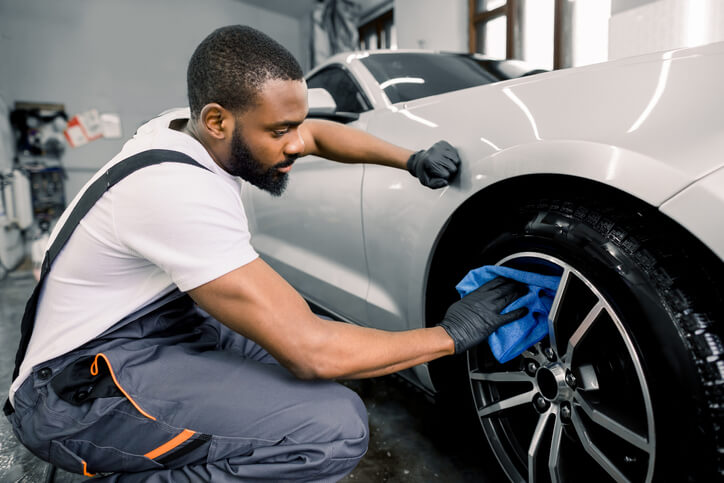What To Know About Waterless Detailing After Auto Detailing Training
Environmental consciousness and sustainability are at the forefront of our collective consciousness, the automotive industry is no exception. Car owners and professionals are seeking eco-friendly alternatives to traditional car maintenance practices. Waterless detailing, also known as waterless car wash or eco-friendly car cleaning, has gained popularity in recent years as a sustainable and efficient method for maintaining the exterior of the vehicle. This innovative approach to car care has revolutionized how we think about washing and detailing cars, offering numerous benefits to car owners and the environment.
The Basics of Waterless Detailing and Its Benefits
Waterless detailing is a car cleaning method that does exactly what the name suggests – it cleans and polishes the vehicle without copious amounts of water. Traditional car washing typically requires a hose, bucket, and gallons of water, which wastes resources and can lead to pollution when runoff water carries contaminants into the environment. Waterless detailing, on the other hand, minimizes water usage and environmental impact.
So, how does it work? Waterless detailing products are specially formulated to lift dirt and grime from the surface of the car, encapsulate it, and provide a protective layer to prevent scratching during the cleaning process. These products are typically sprayed onto the vehicle’s surface and then wiped away with microfiber towels. The key to success with waterless detailing after auto detailing courses is choosing high-quality, eco-friendly products and using proper techniques to avoid damaging the car’s finish.

The most apparent benefit of waterless detailing is its water-saving potential. With traditional washing methods, it’s estimated that an average car wash can use up to 100 gallons of water. Waterless detailing typically requires less than a gallon of water per wash, making it a far more environmentally friendly choice. By reducing water usage and minimizing pollution from runoff water, waterless detailing contributes to a cleaner and more sustainable environment. Additionally, many waterless detailing products are biodegradable and eco-friendly, further reducing their impact on the planet.
Properly formulated waterless detailing products provide a protective layer on the car’s paintwork, helping to prevent minor scratches and UV damage. This added layer of defense can extend the life of the vehicle’s finish and maintain its resale value. Furthermore, waterless detailing isn’t limited to cleaning the car’s exterior. Many waterless products are formulated for various surfaces, allowing you to clean windows, wheels, and interiors. This versatility makes waterless detailing an all-in-one solution for keeping the vehicle looking its best.
The Process for Waterless Detailing After Auto Detailing Training
The process of waterless detailing after auto detailing training involves several key steps: First, ensure the vehicle’s surface is cool to the touch and not exposed to direct sunlight to prevent product residue and enhance cleaning effectiveness.
Next, generously spray the waterless detailing product onto a small section of the vehicle’s surface. Then, using a clean and soft microfiber towel, gently wipe the sprayed area in a straight-line motion to lift dirt and grime without causing paint scratches.
Finally, use a separate clean microfibre towel to buff the surface to a high shine to enhance the vehicle’s appearance and provide protection.

Waterless detailing is best suited for vehicles with light to moderate levels of dirt and grime. If the vehicle is excessively dirty, it’s advisable to perform a traditional wash first to avoid potential scratches during the waterless detailing process. Selecting the right waterless detailing product is crucial for achieving optimal results.
High-quality products are designed to lift dirt gently and safely from the surface while leaving a glossy finish. Ensure you choose a reputable brand and follow the manufacturer’s instructions for best results.
The tools and techniques used in waterless detailing are also essential for preventing scratches and swirl marks. Always use clean and soft microfiber towels, and avoid excessive pressure while wiping the surface. Using a two-bucket method (one for rinsing the towel) can further reduce the risk of scratching.
Are you considering enrolling in our automotive school?
Contact ATC Cambridge to learn how you can get started.


